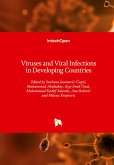1 Epidemiological Concepts and Methods.- 1. Introduction.- 2. Definitions and Methods.- 3. The Agent.- 4. The Environment.- 5. Routes of Transmission.- 5.1. Respiratory.- 5.2. Gastrointestinal.- 5.3. Skin.- 5.4. Genital.- 5.5. Genitourinary.- 5.6. Personal Contact.- 5.7. Water and Food.- 5.8. Arthropod Borne.- 6. Pathogenesis.- 6.1. Respiratory.- 6.2. Gastrointestinal.- 6.3. Systemic Infections.- 6.4. The Exanthem.- 6.5. Infections of the Central Nervous System.- 6.6. Persistent Viral Infections.- 7. Incubation Period.- 8. The Immune Response.- 8.1. Humoral Immunity.- 8.2. Local Immunity (Secretory IgA System).- 8.3. Cell-Mediated Immunity.- 8.4. Immune Responses in the Pathogenesis of Viral Diseases.- 9. Patterns of Host Responses.- 9.1. The Biological Gradient.- 9.2. Clinical Syndromes.- 10. Diagnosis of Viral Diseases.- 10.1. Collection.- 10.2. Requests for Testing.- 10.3. Interpretation of Tests.- 11. Proof of Causation.- 12. Control and Prevention.- 13. References.- 14. Suggested Reading.- 2 Surveillance and Seroepidemiology.- 1. Introduction.- 2. Surveillance.- 2.1. Historical Background.- 2.2. Elements of Surveillance.- 2.3. Other Surveillance Methods.- 2.4. Surveillance in Research Studies.- 2.5. Publications on Surveillance.- 2.6. Predictive Surveillance.- 3. Seroepidemiology.- 3.1. Introduction.- 3.2. Historical Background.- 3.3. Methodology.- 3.4. Advantages and Limitations.- 3.5. Uses of Seroepidemiology.- 4. References.- 3 Adenoviruses.- 1. Introduction.- 2. Historical Background.- 3. Methodology Involved in Epidemiological Analysis.- 3.1. Sources of Data.- 3.2. Interpretation of Laboratory Tests.- 4. Characteristics of the Virus.- 5. Descriptive Epidemiology.- 5.1. Synopsis of Descriptive Epidemiology.- 5.2. Epidemiological and Clinical Aspects of Specific Syndromes.- 6. Mechanisms and Route of Transmission.- 7. Pathogenesis and Immunity.- 8. Pattern of Host Response.- 9. Control and Prevention.- 10. Unresolved Problems.- 11. References.- 12. Suggested Reading.- 4 Arboviruses.- 1. Introduction.- 2. Historical Background.- 3. Methodology Involved in Epidemiological Analysis.- 3.1. Sources of Mortality Data.- 3.2. Sources of Morbidity Data.- 3.3. Serological Surveys.- 3.4. Laboratory Methods.- 4. Biological Characteristics of Virus Affecting the Epidemiological Pattern.- 5. Epidemiology.- 5.1. Incidence and Prevalence.- 5.2. Epidemic Behavior.- 5.3. Geographic Distribution.- 5.4. Temporal Distribution.- 5.5. Age and Sex.- 5.6. Other Factors.- 6. Mechanism and Route of Transmission.- 7. Pathogenesis and Immunity.- 8. Patterns of Host Response.- 8.1. Clinical Features.- 8.2. Diagnosis.- 9. Control and Prevention.- 10. Characteristics of Selected Arboviruses.- 10.1. Arboviruses of Importance in the United States¿.- 10.2. Other Arboviruses Affecting Human Beings in the United States.- 10.3. Arboviruses Affecting Human Beings Outside the United States.- 11. Unresolved Problems.- 11.1. The Viruses.- 11.2. The Vectors.- 11.3. The Vertebrate Hosts.- 11.4. Transmission Cycles Involving Virus, Vector, and Vertebrate.- 11.5. Disease in the Vertebrate Host.- 11.6. Control.- 12. References.- 13. Suggested Reading.- 5 Arenaviruses.- 1. Introduction.- 2. Historical Background.- 3. Methodology.- 3.1. Mortality.- 3.2. Morbidity.- 3.3. Serological Surveys.- 3.4. Laboratory Diagnosis.- 4. The Viruses.- 4.1. Biochemical and Physical Properties.- 4.2. Morphology and Morphogenesis.- 4.3. Antigenic Properties.- 4.4. Biological Properties.- 5. Pathogenesis and Immunity.- 6. Lymphocytic Choriomeningitis.- 6.1. Descriptive Epidemiology.- 6.2. Mechanism and Route of Transmission.- 6.3. Patterns of Host Response.- 6.4. Treatment and Prevention.- 7. Argentinian Hemorrhagic Fever.- 7.1. Descriptive Epidemiology.- 7.2. Mechanism and Route of Transmission.- 7.3. Patterns of Host Response.- 7.4. Treatment, Control, and Prevention.- 8. Bolivian Hemorrhagic Fever.- 8.1. Descriptive Epidemiology.- 8.2. Mechanism and Route of Transmission.- 8.3. Patterns of Host Response.- 8.4. Treatment, Prevention, and Control.- 9. Lassa Fever.- 9.1. Descriptive Epidemiology.- 9.2. Mechanism and Route of Transmission.- 9.3. Patterns of Host Response.- 9.4. Treatment and Disposition of Patients.- 9.5. Prevention and Control.- 10. Unresolved Questions.- 10.1. Vaccines.- 10.2. Early Diagnosis of Lassa Fever and Evacuation of Patients.- 10.3. Hemorrhagic Fever with Renal Syndrome.- 11. References.- 12. Suggested Reading.- 6 Coronaviruses.- 1. Introduction.- 2. Historical Background.- 3. Methodology.- 3.1. Sources of Mortality Data.- 3.2. Sources of Morbidity Data.- 3.3. Serological Surveys.- 3.4. Laboratory Methods.- 4. Biological Characteristics of the Virus.- 5. Descriptive Epidemiology.- 5.1. Incidence and Prevalence.- 5.2. Geographic Distribution.- 5.3. Temporal Distribution.- 5.4. Age.- 5.5. Other Factors.- 6. Mechanisms and Routes of Transmission.- 7. Pathogenesis and Immunity.- 8. Patterns of Host Response.- 9. References.- 10. Suggested Reading.- 7 Cytomegalovirus.- 1. Introduction.- 2. Historical Background.- 3. Methodology.- 3.1. Mortality.- 3.2. Morbidity.- 3.3. Serological Surveys.- 3.4. Laboratory Diagnosis.- 4. Biological Characteristics of the Virus.- 5. Descriptive Epidemiology.- 5.1. Prevalence and Incidence.- 5.2. Geographic Distribution.- 5.3. Age and Sex.- 5.4. Temporal Distribution.- 5.5. Occupation.- 5.6. Race/Socioeconomic Setting.- 6. Mechanism of Transmission.- 7. Pathogenesis and Immunity.- 7.1. Pathogenesis.- 7.2. Immunity.- 8. Patterns of Host Response.- 8.1. Neonatal Infections.- 8.2. Infection of Children and Adults.- 9. Immunization.- 10. Unresolved Problems.- 11. References.- 12. Suggested Reading.- 8 Enteroviruses.- 1. Introduction.- 2. Historical Background.- 3. Methodology Involved in Epidemiological Analysis.- 3.1. Sources of Mortality Data.- 3.2. Sources of Morbidity Data.- 3.3. Serological Surveys.- 3.4. Virus Isolation from Surface Waters as an Indicator of Community Infections.- 3.5. Laboratory Methods.- 4. Biological Characteristics of Virus Affecting the Epidemiological Pattern.- 4.1. General Properties.- 4.2. Reactions to Chemical and Physical Agents.- 4.3. Antigenic Characteristics.- 4.4. Host Range in Vivo and in Vitro.- 4.5. Replication of Enteroviruses.- 5. Descriptive Epidemiology.- 5.1. General Epidemiology of Enteroviruses.- 5.2. Epidemiological Patterns of Poliomyelitis.- 6. Mechanisms and Route of Transmission.- 7. Pathogenesis and Immunity.- 7.1. Pathogenesis.- 7.2. Immunity.- 8. Patterns of Host Response and Diagnosis.- 8.1. Clinical Syndromes.- 8.2. Diagnosis.- 9. Control and Prevention.- 9.1. Schedules of Oral Vaccine Administration.- 9.2. Problems Associated with Oral Polio Vaccine.- 9.3. Current Status of Immunization for Poliomyelitis in the United States.- 9.4. ¿Social Failures¿ of Vaccine Administration.- 9.5. Nonspecific Control Measures.- 9.6. Control of Other Enterovirus Infections.- 10. Unresolved Problems.- 11. References.- 9 Epstein-Barr Virus.- 1. Introduction.- 2. History.- 3. Methodology.- 3.1. Mortality Data.- 3.2. Morbidity Data.- 3.3. Serological Surveys.- 3.4. Laboratory Methods.- 4. Biological Characteristics of the Agent.- 4.1. The Virus.- 4.2. Proof of Causation of Infectious Mononucleosis.- 5. Descriptive Epidemiology.- 5.1. Prevalence and Incidence.- 5.2. Epidemic Behavior.- 5.3. Geographic Distribution.- 5.4. Temporal Distribution.- 5.5. Age.- 5.6. Sex.- 5.7. Race.- 5.8. Occupation.- 5.9. Occurrence in Different Settings.- 5.10. Socioeconomic Factors.- 5.11. Other Factors.- 6. Mechanism and Route of Transmission.- 7. Pathogenesis and Immunity.- 8. Patterns of Host Response.- 8.1. Clinical Features.- 8.2. Diagnosis.- 9. Control and Prevention.- 10. Unsolved Problems.- 11. References.- 12. Suggested Reading.- 10 Viral Hepatitis.- 1. Introduction.- 2. Historical Background.- 3. Methodology Involved in Epidemiological Analysis.- 3.1. Mortality.- 3.2. Morbidity.- 3.3. Serological Surveys.- 3.4. Laboratory Methods.- 4. Biological Characteristics of the Human Hepatitis Viruses.- 5. Descriptive Epidemiology.- 5.1. Viral Hepatitis Type A.- 5.2. Viral Hepatitis Type B.- 6. Mechanisms and Routes of Transmission.- 6.1. Viral Hepatitis Type A.- 6.2. Viral Hepatitis Type B.- 7. Pathogenesis and Immunity.- 7.1. Viral Hepatitis Type A.- 7.2. Viral Hepatitis Type B.- 8. Patterns of Host Response.- 8.1. Clinical Features.- 8.2. Laboratory Diagnosis.- 9. Control and Prevention.- 9.1. Type A.- 9.2. Type B.- 10. Unresolved Problems.- 11. References.- 11 Epidemiology of Herpes Simplex Viruses 1 and 2.- 1. Introduction and Social Significance.- 2. Evolutionary and Historical Background.- 3. Methodology Involved in Epidemiological Analysis.- 3.1. Mortality.- 3.2. Morbidity.- 3.3. Serological Surveys.- 3.4. Laboratory Diagnosis.- 4. Biological Characteristics of HSV-1 and HSV-2.- 5. Descriptive Epidemiology.- 5.1. General Epidemiology.- 5.2. Epidemiological Aspects of Specific Clinical Entities.- 6. Mechanisms and Routes of Transmission.- 7. Pathogenesis and Immunity.- 8. Patterns of Host Response.- 8.1. Mouth and Respiratory and Gastrointestinal Tracts¿.- 8.2. Lips.- 8.3. Eyes.- 8.4. Skin.- 8.5. Urogenital Tract.- 8.6. Nervous System.- 8.7. Fetus and Newborn.- 9. Control and Prevention.- 9.1. Prevention of the Initial Infection.- 9.2. Reducing the Source of Virus Transmissible to Others.- 10. Unresolved Problems.- 10.1. Reporting.- 10.2. Virological Aspects.- 10.3. Host Factors.- 10.4. Control and Prevention.- 11. References.- 12. Suggested Reading.- 12 Influenza Viruses.- 1. Introduction.- 2. Historical Background.- 3. Epidemiological Methodology.- 3.1. MortaUty Data.- 3.2. Morbidity Data.- 3.3. Serological Surveys.- 3.4. Laboratory Methods.- 4. Biological Characteristics of the Virus.- 5. Descriptive Epidemiology.- 5.1. Incidence and Prevalence Date.- 5.2. Epidemic Behavior.- 5.3. Geographic Distribution.- 5.4. Temporal Distribution.- 5.5. Age.- 5.6. Other Factors.- 6. Transmission.- 7. Pathogenesis and Immunity.- 7.1. Pathogenesis.- 7.2. Immunity.- 8. Patterns of Host Response.- 8.1. Clinical Features.- 8.2. Diagnosis.- 9. Control Measures.- 10. Unresolved Problems.- 11. References.- 12. Suggested Reading.- 13 Measles.- 1. Introduction.- 2. Historical Background.- 3. Methodology Involved in Epidemiological Analysis.- 3.1. Sources of Mortality Data.- 3.2. Sources of Morbidity Data.- 3.3. Serological Surveys.- 3.4. Laboratory Methods.- 4. Biological Characteristics of the Virus.- 5. Descriptive Epidemiology.- 5.1. Incidence.- 5.2. Epidemic Behavior.- 5.3. Geographic Distribution.- 5.4. Temporal Distribution.- 5.5. Age.- 5.6. Sex.- 5.7. Race.- 5.8. Occupation.- 5.9. Social Setting.- 5.10. Socioeconomic Factors.- 5.11. Nutrition.- 6. Transmission.- 7. Pathogenesis and Immunity.- 8. Patterns of Host Response.- 8.1. Clinical Features of Unusual Forms.- 8.2. Diagnosis.- 9. Control and Prevention.- 10. Unresolved Problems.- 10.1. Vaccine Distribution.- 10.2. Unusual Reactions Following Killed Vaccine.- 10.3. Measles and Multiple Sclerosis.- 11. References.- 14 Mumps.- 1. Introduction.- 2. Historical Background.- 3. The Agent.- 4. Methodology Involved in Epidemiological Analysis.- 4.1. Sources of Data.- 4.2. Serological Surveys.- 4.3. Laboratory Methods.- 5. Descriptive Epidemiology.- 5.1. Incidence and Prevalence.- 5.2. Survey Data.- 5.3. Epidemic Behavior and Contagiousness.- 5.4. Geographic Distribution.- 5.5. Temporal Distribution.- 5.6. Age.- 5.7. Sex.- 5.8. Race and Occupation.- 5.9. Occurrence in Different Settings.- 5.10. Other Factors.- 6. Mechanisms and Routes of Transmission.- 7. Pathogenesis and Immunity.- 8. Patterns of Host Response.- 8.1. Common Clinical Features.- 8.2. Involvement of the Central Nervous System.- 8.3. Involvement of the Heart.- 8.4. Orchitis and Sterility.- 8.5. Mumps and Diabetes.- 8.6. Other Complications.- 9. Control and Prevention.- 10. Unresolved Problems.- 11. References.- 15 The Parainfluenza Viruses.- 1. Introduction.- 2. History.- 3. Methodology Involved in Epidemiological Analysis.. ¿.- 3.1. Sources of Mortality Data.- 3.2. Sources of Morbidity Data.- 3.3. Serological Surveys.- 3.4. Laboratory Methods.- 4. Biological Characteristics of Virus Affecting the Epidemiological Pattern.- 5. Descriptive Epidemiology.- 5.1. Incidence-Prevalence Data.- 5.2. Epidemic Behavior.- 5.3. Geographic Distribution.- 5.4. Temporal Distribution.- 5.5. Age Distribution.- 5.6. Sex.- 5.7. Race and Occupation.- 5.8. Occurrence in Special Epidemiological Settings.- 5.9. Socioeconomic Factors.- 6. Mechanisms and Routes of Transmission.- 7. Pathogenesis and Immunity.- 7.1. Pathogenesis.- 7.2. Immunity.- 8. Patterns of Host Response.- 8.1. Clinical Manifestations.- 8.2. Diagnosis.- 9. Control and Prevention Based on Epidemiological Data¿.- 10. Unresolved Problems.- 11. References.- 12. Suggested Reading.- 16 Rabies.- 1. Introduction.- 2. Historical Background.- 3. Methodology Involved in Epidemiological Analysis.- 3.1. Sources of Mortality Data.- 3.2. Sources of Morbidity Data.- 3.3. Serological Surveys.- 3.4. Laboratory Methods.- 4. Biological Characteristics of Virus Affecting the Epidemiological Pattern.- 5. Descriptive Epidemiology.- 5.1. Incidence.- 5.2. Epidemic Behavior.- 5.3. Geographic Distribution.- 5.4. Temporal Distribution.- 5.5. Age, Sex, Race, Occupation, Socioeconomic, Nutritional, and Genetic Factors.- 6. Mechanisms and Routes of Transmission.- 7. Pathogenesis and Immunity.- 8. Patterns of Host Response.- 8.1. Clinical Features.- 8.2. Diagnosis.- 9. Control and Prevention.- 9.1. Epidemiological Methods.- 9.2. Immunization Concepts and Practice.- 10. Unresolved Problems.- 10.1. Epizootiology of Wildlife Rabies.- 10.2. Rabies-Related Viruses.- 10.3. Vaccines.- 11. References.- 12. Suggested Reading.- 17 Respiratory Syncytial Virus.- 1. Introduction and Historical Background.- 2. Methodology Involved in Epidemiological Analysis.- 2.1. Sources of Mortality Data.- 2.2. Sources of Morbidity Data.- 2.3. Serological Surveys.- 2.4. Laboratory Methods.- 3. Biological Characteristics of Virus Affecting the Epidemiological Pattern.- 4. Descriptive Epidemiology.- 4.1. Incidence and Prevalence Data.- 4.2. Epidemic Behavior.- 4.3. Geographic Distribution.- 4.4. Temporal Distribution.- 4.5. Age.- 4.6. Sex.- 4.7. Race.- 4.8. Occupation.- 4.9. Occurrence in Different Settings.- 4.10. Socioeconomic.- 4.11. Other Factors, Nutrition, Genetics, etc.- 5. Mechanisms and Routes of Transmission.- 6. Pathogenesis and Immunity.- 7. Patterns of Host Response.- 7.1. Symptoms.- 7.2. Diagnosis.- 8. Control and Prevention.- 9. Unsolved Problems.- 10. References.- 11. Suggested Reading.- 18 Rhinoviruses.- 1. Introduction.- 2. Historical Background.- 3. Methodology Involved in Epidemiological Analysis¿.- 3.1. Surveillance and Sampling.- 3.2. Methods of Virus Isolation and Propagation.- 3.3. Methods Used for Serological Surveys and Antibody Measurements.- 4. Characteristics of Virus Affecting the Epidemiological Pattern.- 4.1. Physical and Biochemical Characteristics.- 4.2. Biological Characteristics.- 4.3. Antigenic Characteristics.- 5. Descriptive Epidemiology.- 5.1. Incidence and Prevalence of Infection.- 5.2. Occurrence in Different Settings.- 6. Mechanisms and Routes of Transmission.- 7. Pathogenesis.- 8. Immunity.- 9. Patterns of Host Response.- 9.1. Clinical Features.- 9.2. Apparent/Inapparent Infection Ratio.- 10. Control and Prevention.- 11. Unresolved Problems.- 12. References.- 13. Suggested Reading.- 19 Rubella.- 1. Introduction.- 2. Historical Background.- 3. Methodology.- 3.1. Mortality Data.- 3.2. Morbidity Data.- 3.3. Serological Surveys.- 3.4. Laboratory Methods.- 4. Biological Characteristics of the Virus.- 5. Descriptive Epidemiology.- 5.1. Incidence and Prevalence.- 5.2. Epidemic Behavior.- 5.3. Geographic Distribution.- 5.4. Temporal Distribution.- 5.5. Age and Sex.- 5.6. Other Factors.- 6. Mechanisms and Routes of Transmission.- 7. Pathogenesis and Immunity.- 8. Patterns of Host Response.- 8.1. Clinical Manifestations.- 8.2. Serological Responses.- 9. Control.- 9.1. Vaccine Development.- 9.2. Responses to Rubella Vaccines.- 9.3. Vaccination of Children.- 9.4. Vaccination of Women of Childbearing Age.- 9.5. Management of the Rubella Problem in Pregnancy.- 9.6. Use of ?-Globulin.- 10. Unresolved Problems.- 11. References.- 12. Suggested Reading.- 20 Smallpox.- 1. Introduction.- 2. Historical Background.- 3. Methodology Involved in Epidemiological Analysis.- 3.1. Sources of Mortality Data.- 3.2. Sources of Morbidity Data.- 3.3. Surveys.- 3.4. Laboratory Methods.- 4. Biological Characteristics of the Virus.- 5. Descriptive Epidemiology.- 5.1. Incidence and Prevalence Data.- 5.2. Epidemic Behavior.- 5.3. Geographic Distribution.- 5.4. Temporal Distribution.- 5.5. Age.- 5.6. Sex.- 5.7. Race.- 5.8. Occupation.- 5.9. Occurrence in Different Settings.- 5.10. Socioeconomic Distribution.- 5.11. Other Factors.- 6. Mechanisms and Routes of Transmission.- 6.1. Period of Communicability.- 6.2. Contact Spread.- 6.3. Airborne Spread.- 6.4. Spread by Fomites.- 6.5. Vectors.- 6.6. Animal Reservoirs.- 7. Pathogenesis and Immunity.- 7.1. Pathogenesis.- 7.2. Immunity.- 8. Patterns of Host Response.- 9. Control and Prevention Based on Epidemiological Data¿.- 9.1. Control Programs.- 9.2. Immunization Concepts and Practice.- 10. Unresolved Problems.- 11. References.- 12. Suggested Reading.- 21 Varicella-Herpes Zoster Virus.- 1. Introduction.- 1.1. Definition.- 1.2. Social Significance.- 2. Historical Background.- 2.1. Clinical Recognition.- 2.2. Association of Varicella with Herpes Zoster.- 2.3. Isolation and Propagation of the Etiological Agent of Varicella- Zoster.- 3. Methodology Involved in Epidemiological Analysis.- 3.1. Sources of Mortality Data.- 3.2. Sources of Morbidity Data.- 3.3. Serological Surveys.- 3.4. Laboratory Methods.- 4. Biological Characteristics of V-Z Virus Affecting the Epidemiological Pattern.- 4.1. Latency in the Human Host: Primary Infection, Latency, and Reactivation.- 4.2. Failure of V-Z Virus to Persist in Scabs or Fomites: Limited Period of Communicability.- 5. Descriptive Epidemiology.- 5.1. Data on Incidence and Prevalence.- 5.2. Epidemic Behavior.- 5.3. Geographic Distribution.- 5.4. Temporal Distribution.- 5.5. Age.- 5.6. Sex.- 5.7. Race.- 5.8. Occupation.- 5.9. Occurrence of Varicella in Different Settings.- 5.10. Socioeconomic Factors.- 5.11. Other Factors.- 6. Mechanisms and Routes of Transmission.- 6.1. Varicella.- 6.2. Herpes Zoster.- 7. Pathogenesis and Immunity.- 7.1. Varicella.- 7.2. Herpes Zoster.- 8. Patterns of Host Response.- 8.1. Clinical Patterns.- 8.2. Diagnosis.- 9. Control and Prevention.- 9.1. General Concepts.- 9.2. Interruption of Transmission.- 9.3. Modification or Prevention of Varicella.- 10. Unresolved Problems.- 10.1. Prevention.- 10.2. Pathogenesis.- 10.3. Epidemiological Unknowns.- 10.4. In the Laboratory.- 11. References.- 12. Suggested Reading.- 22 Epidemiology of Burkitt Lymphoma.- 1. Introduction.- 2. Historical Background.- 3. Methodology.- 3.1. Mortality and Morbidity Data.- 3.2. Serological Surveys.- 3.3. Laboratory Diagnosis.- 4. Biology of Epstein-Barr Virus.- 4.1. Structure and Morphology.- 4.2. EBV Cell-Associated Antigens.- 4.3. Cell/Virus Relationships.- 4.4. Cell Transformation and Oncogenicity.- 4.5. Relationship of EBV to Burkitt Lymphoma.- 5. Descriptive Epidemiology.- 5.1. Incidence.- 5.2. Geographic Factors.- 5.3. Age and Sex.- 5.4. Genetic and Other Host Factors.- 6. Mechanism and Route of Transmission.- 7. Pathogenesis.- 7.1. Cell Transformation.- 7.2. Immunological Surveillance.- 8. Patterns of Host Response.- 8.1. Clinical and Pathological Features.- 8.2. Serological Features.- 9. Therapy and Control.- 9.1. Chemotherapy.- 9.2. Malaria Control.- 9.3. Vaccines.- 10. Unresolved Problems.- 11. References.- 23 Epidemiology of Cervical Cancer.- 1. Introduction.- 2. History.- 3. Methodology.- 3.1. Mortality and Morbidity of Cervical Neoplasia.- 3.2. Studies Relating HSV to Cervical Cancer.- 4. Biology of the Cancer and the Virus.- 4.1. Cervical Cancer.- 4.2. Herpes Simplex Viruses.- 5. Descriptive Epidemiology.- 5.1. Incidence and Mortality Data.- 5.2. Lifetime Risk.- 5.3. Age.- 5.4. Geographic Distribution.- 5.5. Socioeconomic Status.- 5.6. Ethnic or Religious Origin.- 5.7. Other Variables.- 6. Mechanisms and Routes of Transmission.- 7. Pathogenesis and Immunity.- 7.1. Pathogenesis.- 7.2. Immunity.- 8. Patterns of Host Response.- 8.1. Clinical and Pathological Features.- 8.2. Serological Features.- 9. Therapy and Control.- 10. Unresolved Problems.- 10.1. Control of Cervical Cancer with Available Knowledge¿.- 10.2. Establishing a Causal Role of HSV in Human Carcinogenesis.- 11. References.- 12. Suggested Reading.- 24 Chronic Neurological Diseases: Subacute Sclerosing Panencephalitis, Progressive Multifocal Leukoencephalopathy, Kuru, Creutzfeldt-Jakob Disease.- 1. Introduction.- 2. Subacute Sclerosing Panencephalitis.- 2.1. Introduction.- 2.2. Historical Background.- 2.3. Methodology.- 2.4. Biological Characteristics of the Virus.- 2.5. Descriptive Epidemiology.- 2.6. Pathogenesis and Immunity.- 2.7. Patterns of Host Response.- 2.8. Control and Prevention.- 2.9. Unresolved Problems.- 3. Progressive Multifocal Leukoencephalopathy.- 3.1. Introduction and Historical Background.- 3.2. Methodology.- 3.3. Biological Characteristics of the Virus.- 3.4. Descriptive Epidemiology.- 3.5. Pathogenesis and Immunity.- 3.6. Patterns of Host Response.- 3.7. Unresolved Problems.- 4. Kuru.- 4.1. Introduction.- 4.2. Historical Background.- 4.3. Methodology.- 4.4. Biological Characteristics of the Virus.- 4.5. Descriptive Epidemiology.- 4.6. Mechanisms and Routes of Transmission.- 4.7. Pathogenesis and Immunity.- 4.8. Patterns of Host Response.- 4.9. Control and Prevention.- 4.10. Unresolved Problems.- 5. Creutzfeldt-Jacob Disease.- 5.1. Introduction.- 5.2. Historical Background.- 5.3. Methodology.- 5.4. Biological Characteristics of the Virus.- 5.5. Descriptive Epidemiology.- 5.6. Mechanisms and Routes of Transmission.- 5.7. Pathogenesis and Immunity.- 5.8. Patterns of Host Response.- 5.9. Unresolved Problems.- 6. Summary and Comparison.- 7. Unresolved Problems.- 8. References.- 9. Suggested Reading.- 25 Nasopharyngeal Carcinoma.- 1. Introduction.- 2. Historical Background.- 3. Methodology Involved in Epidemiological and Virological Studies.- 3.1. Sources of Mortality Data.- 3.2. Sources of Morbidity (Incidence) Data.- 3.3. Sources of Relative Frequency Data.- 3.4. Serological Surveys.- 3.5. Sociological Surveys.- 3.6. Laboratory Diagnosis.- 4. Biological Characteristics of EBV in Its Relationship with NPC.- 5. Descriptive Epidemiology.- 5.1. Incidence, Frequency, and Geographic Distribution¿.- 5.2. Epidemic Behavior.- 5.3. Sex and Age.- 5.4. Occupation.- 5.5. Change of Risk on Migration.- 5.6. Environmental Factors.- 5.7. Genetic Factors.- 5.8. Epidemiological Behavior of EBV.- 6. Mechanism of Transmission.- 7. Pathogenesis and Immunity.- 8. Patterns of Host Response.- 8.1. Clinical Course of NPC.- 8.2. Clinical Types of Disease.- 9. Control and Prevention.- 10. Unresolved Problems.- 10.1. Etiology of NPC.- 10.2. Problems Which May Be Resolved in Short-Term Projects.- 10.3. Long-Term Problems.- 11. References.
Hinweis: Dieser Artikel kann nur an eine deutsche Lieferadresse ausgeliefert werden.
Hinweis: Dieser Artikel kann nur an eine deutsche Lieferadresse ausgeliefert werden.








